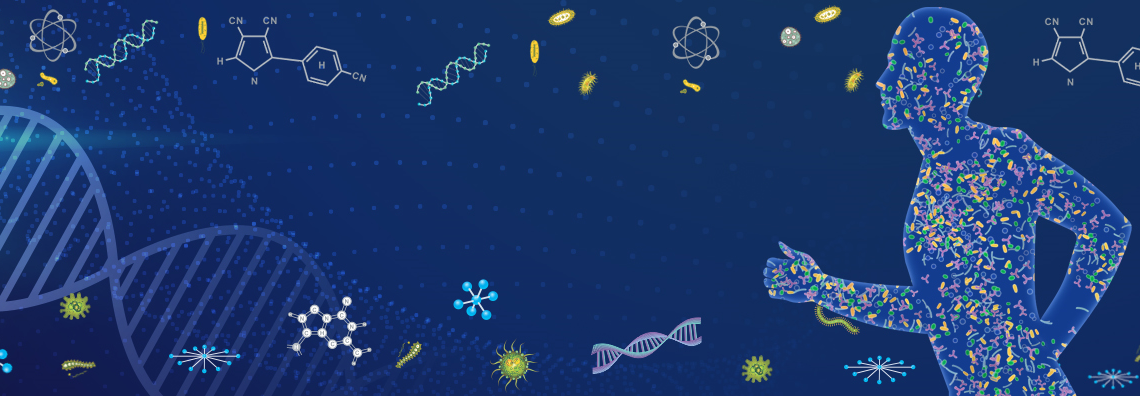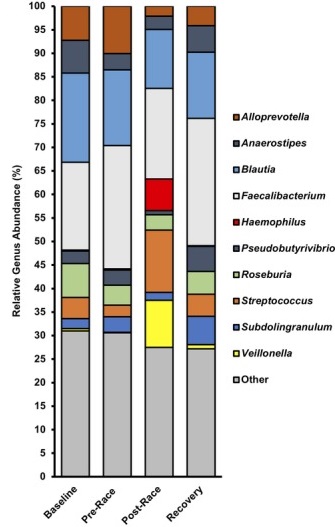
Studies have found that certain bacteria make mice run longer on the treadmill. They have found the same bacteria in the human gut of athletes right after exercise. Does it mean that if we had those strains of bacteria in our system, we could improve our endurance when doing sports? Science seems to point to a yes answer. Other studies have looked at epigenetic markers in people who exercise, and have seen marked changes in some cells, because epigenetics change the activity of our genes, usually by “silencing” some genes. Many of us know or can guess that our athletic potential is linked to our genes, but what if those genes are silenced, and what if our bacteria can bring their own genes into play?
There are many genes that are associated with athletic performance, the most well-known ones are ACTN3 and ACE. Studies have found that most elite power athletes have a specific genetic variant of the ACTN3 gene, the fast twitch muscle gene, and gene ACE, which is associated with human physical performance. What is now being studied is how our genes are modified sometimes on a daily basis through epigenetics, especially through a process called methylation. A study by Schenk et al 2019 studied epigenetic changes in five healthy women who performed an incremental step test. Blood samples were taken before and after exercise to study 33 methylation markers in their natural killer cells (NKC). NKC have an important role in controlling immune responses and inflammation, and it is known that inflammation increases after strenuous exercise. The study found that after acute exercise, DNA-methylation was changed, with 25 genes showing increased and some decreased methylation. It was surprising for them to observe that DNA-methylation which was thought to be a more stable epigenetic modification could be so dynamic.
Besides epigenetics and our own genes, even if we do not have that athlete gene, maybe our bacteria does. We have all seen the before and after photos of people who have transformed their bodies from a couch potato type to a muscular bodybuilder type. Apart from all the personal effort and attention we can put into achieving a competitive level in any sport, there are molecular processes that can help us along. Simply by exercising, our body adopts the molecular mechanisms of an athlete. The more we do it the more our internal molecular machinery keeps pace with our efforts. A Dec 2019 study by Grosicki et al, looked at the microbiome of a world-class marathon runner, and studied his microbiome at four time‐points: 21 weeks, 2 weeks before a competitive race and 2 hours after and 10 days after. While this study is of only one person, there are previous studies with more athletes that support the findings. And what they found is that the biggest changes in the microbiome were observed 2 hours after the race. 2 hours after the race they found an astonishing increase in Haemophilus (28,000%), Veillonella (+14,229%), Streptococcus (+438%) and reductions in Alloprevotella (−79%) and Subdolingranulum (−50%). Ten days after the race, the amount of the bacterial strains was returning to close to normal. Haemophilus is a bacterial genus that includes the strep throat bacteria and other disease-causing bacteria. The authors argue that it could be due to a travel infection and because the immune system weakens right after exercise. But the strain of Veillonella atypica has been found in other studies to be associated with exercise performance, most recently in Scheiman et al 2019. When this strain was introduced into mice it made them run on the treadmill much longer than mice who were not inoculated with the strain.

Figure 2 of the Dec 2019 study by Grosicki et al shows the microbiome composition of the marathon runner at the 4 points in time. You can ask a health scientist at https://omicshelpdesk.com/ for help in obtaining your own microbiome-over-time chart. We recommend you choose microbiome services that give you access to the raw genetic sequence data of your bacteria.
A recent study by Jäger et al 2019 looked at probiotic supplementation to optimize the health, performance, and recovery of athletes. The immune system is known to weaken in athletes with excessive training load, psychological stress, disturbed sleep, and environmental extremes, all of which can contribute to an increased risk of respiratory tract infections. They mentioned probiotic supplementation of Akkermancia muciniphila which increased anti-inflammatory factors in mice. Interaction between Akkermancia muciniphila and inflammatory processes may subsequently impact metabolic health muscle damage and recovery. In the United States, probiotics are sold as dietary supplements, which do not require FDA approval. In Canada, the Health Canada LCNHPD (Licensed Natural Health Products Database) has a list of probiotics which allows consumers and retailers the ability to review claims on packaging to approved claims. A long list of LCNHPD recommended probiotic species used for sports performance can be found in Table 5.
New omics research is discovering all the different interactions between the different molecular markers in our bodies and our health and performance. Athletes who seek to stay competitive will be looking for access to omics profiling labs to take advantage of all the knowledge being generated by this new research. The rest of us may want to look into some probiotics to help us get up from the couch or to prevent a sluggish performance in the gym.
